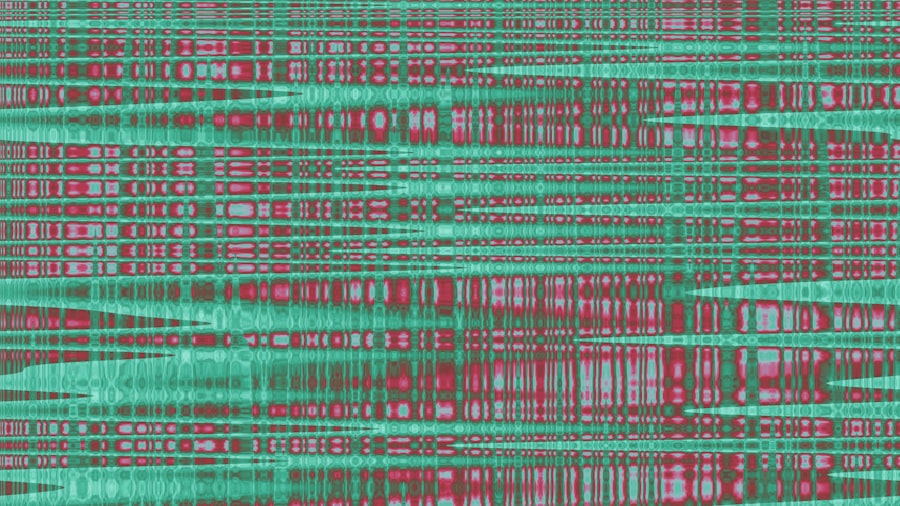The Cassini spacecraft, a marvel of modern engineering and scientific inquiry, has provided an unprecedented wealth of data about Saturn and its moons since its launch in 1997. This mission, a collaboration between NASA, the European Space Agency, and the Italian Space Agency, has significantly advanced humanity’s understanding of the Saturnian system. Over the course of its nearly two-decade-long journey, Cassini transmitted a staggering amount of information back to Earth, including detailed images, spectroscopic data, and measurements of the planet’s atmosphere and magnetic field.
The richness of this data has opened new avenues for research and exploration, allowing scientists to delve deeper into the mysteries of one of the solar system’s most enigmatic planets. However, with such a vast dataset comes the challenge of ensuring its accuracy and reliability. The complexity of the data collected by Cassini necessitates rigorous analysis to identify any potential anomalies or inconsistencies that could skew scientific interpretations.
As researchers sift through the troves of information, they must remain vigilant for signs of structural anomalies that could indicate underlying issues with the data collection process or the instruments themselves.
Key Takeaways
- Cassini’s data has provided valuable insights into the structure and composition of Saturn’s rings and moons.
- Structural anomalies, such as unexpected shapes and formations, have been identified within the data, challenging previous assumptions.
- Analysis of data inconsistencies has revealed potential errors and discrepancies that could impact the accuracy of scientific findings.
- Anomalies within the data have the potential to significantly alter our understanding of Saturn’s system and its evolution.
- Collaborative efforts and advanced methods for uncovering anomalies are crucial for ensuring the integrity and reliability of space mission data.
Identification of Structural Anomalies
Identifying structural anomalies within Cassini’s data is a critical step in ensuring the integrity of scientific findings derived from the mission. Structural anomalies can manifest in various forms, such as unexpected spikes in data readings, irregular patterns in measurements, or discrepancies between different datasets. These anomalies may arise from a range of factors, including instrument malfunctions, environmental influences, or even errors in data processing.
As scientists analyze the data, they employ sophisticated algorithms and statistical methods to detect these irregularities, which can provide valuable insights into the reliability of the information being studied. The identification process often involves cross-referencing data from multiple instruments aboard Cassini. For instance, if one instrument reports an unusual atmospheric composition while another shows consistent readings, researchers must investigate further to determine which dataset is accurate.
This meticulous approach not only helps in pinpointing anomalies but also enhances the overall understanding of Saturn’s complex environment. By systematically cataloging these structural anomalies, scientists can develop a clearer picture of the conditions under which the data was collected and make informed decisions about how to interpret their findings.
Analysis of Data Inconsistencies

Once structural anomalies have been identified, the next step involves a thorough analysis of data inconsistencies. This phase is crucial for understanding the implications of any irregularities found within the datasets. Researchers utilize various analytical techniques to assess the nature and extent of these inconsistencies, often employing statistical models to quantify their impact on scientific conclusions.
By examining patterns and correlations within the data, scientists can discern whether anomalies are isolated incidents or indicative of broader issues affecting multiple datasets. Inconsistencies may arise from several sources, including calibration errors in instruments or variations in environmental conditions during data collection. For example, if temperature readings from Cassini’s instruments show significant fluctuations that do not align with expected atmospheric behavior, researchers must investigate potential causes.
This could involve revisiting calibration procedures or considering external factors such as solar activity that might influence instrument performance. Through careful analysis, scientists can determine whether these inconsistencies compromise the validity of their findings or if they can be accounted for in their interpretations.
Impact of Anomalies on Scientific Findings
| Types of Anomalies | Impact on Scientific Findings |
|---|---|
| Data Anomalies | Can lead to incorrect conclusions and affect the validity of the findings. |
| Methodological Anomalies | May result in biased results and undermine the reliability of the scientific findings. |
| Publication Anomalies | Can lead to dissemination of false or misleading information, impacting the scientific community. |
The presence of anomalies and inconsistencies within Cassini’s data can have profound implications for scientific findings. If left unaddressed, these irregularities may lead to erroneous conclusions about Saturn’s atmosphere, ring system, or moons. For instance, an anomaly in atmospheric pressure readings could mislead researchers regarding the planet’s weather patterns or climate dynamics.
Consequently, understanding the impact of these anomalies is essential for ensuring that scientific interpretations are grounded in reliable data. Moreover, anomalies can also affect the broader scientific community’s confidence in findings derived from Cassini’s mission. If researchers publish results based on flawed data without adequately addressing potential anomalies, it could lead to a cascade of misinformation that undermines subsequent studies.
Therefore, it is imperative for scientists to communicate transparently about any identified anomalies and their potential effects on research outcomes. By doing so, they not only uphold scientific integrity but also foster a culture of accountability within the field.
Methods for Uncovering Anomalies
To effectively uncover anomalies within Cassini’s extensive datasets, researchers employ a variety of methods tailored to the unique challenges posed by space mission data. One common approach involves using machine learning algorithms that can analyze large volumes of data quickly and efficiently. These algorithms are trained to recognize patterns and detect deviations from expected behavior, allowing scientists to identify potential anomalies that may warrant further investigation.
In addition to machine learning techniques, researchers also utilize traditional statistical methods to assess data quality. Techniques such as regression analysis and hypothesis testing can help determine whether observed anomalies are statistically significant or merely random fluctuations. By combining these modern computational tools with established statistical practices, scientists can develop a comprehensive understanding of the data’s integrity and identify areas that require closer scrutiny.
Addressing Data Integrity Issues

Addressing data integrity issues is paramount for ensuring that findings derived from Cassini’s mission are both accurate and reliable. Once anomalies have been identified and analyzed, researchers must take proactive steps to rectify any underlying issues that may have contributed to data inconsistencies. This process often involves revisiting calibration protocols for instruments, implementing more robust data processing techniques, or even re-evaluating how data is collected during future missions.
Furthermore, collaboration among scientists is essential in addressing these integrity issues effectively. By sharing insights and methodologies across disciplines, researchers can develop best practices for data management that enhance overall quality control. This collaborative approach not only strengthens individual studies but also contributes to a more cohesive understanding of Saturn and its moons as part of a larger scientific narrative.
Importance of Data Validation
Data validation plays a critical role in maintaining the integrity of scientific research derived from Cassini’s mission. Validating data involves verifying its accuracy and reliability through systematic checks and comparisons against known standards or benchmarks.
Moreover, robust data validation practices can help identify potential sources of error before they propagate through subsequent analyses. By implementing rigorous validation protocols at various stages of data processing—ranging from initial collection to final interpretation—researchers can mitigate risks associated with anomalies and inconsistencies. Ultimately, prioritizing data validation not only enhances the quality of individual studies but also contributes to the overall credibility of scientific research within the planetary science community.
Implications for Future Space Missions
The lessons learned from analyzing Cassini’s data and addressing its anomalies have significant implications for future space missions. As new missions are planned to explore other celestial bodies—such as Europa or Mars—scientists must consider how best to manage and analyze the vast amounts of data these missions will generate. The experiences gained from Cassini can inform best practices for instrument calibration, data collection protocols, and anomaly detection techniques.
Additionally, as technology continues to advance, future missions may benefit from more sophisticated instruments capable of providing higher-resolution data with greater accuracy. However, this increased complexity will also necessitate more rigorous approaches to data management and analysis. By applying insights gained from Cassini’s mission, researchers can better prepare for the challenges posed by future explorations and ensure that their findings contribute meaningfully to our understanding of the universe.
Collaborative Efforts in Data Analysis
Collaboration among scientists is essential for effective data analysis in space missions like Cassini’s. The interdisciplinary nature of planetary science requires expertise from various fields—including physics, engineering, computer science, and geology—to fully comprehend the complexities inherent in space exploration data. Collaborative efforts enable researchers to pool their knowledge and resources, leading to more comprehensive analyses and interpretations.
Moreover, collaborative platforms allow scientists to share their findings and methodologies with a broader audience. By fostering an open exchange of ideas and techniques, researchers can collectively address challenges related to anomaly detection and data integrity. This spirit of collaboration not only enhances individual studies but also contributes to a more robust scientific community capable of tackling the intricate questions posed by planetary exploration.
Recommendations for Data Management
To ensure the continued success of future space missions and maintain high standards for scientific research derived from them, several recommendations for data management emerge from the lessons learned during Cassini’s mission. First and foremost, establishing clear protocols for instrument calibration and data collection is essential for minimizing discrepancies in datasets. Regular reviews and updates to these protocols can help adapt to evolving technologies and methodologies.
Additionally, implementing comprehensive training programs for scientists involved in data analysis can enhance their ability to identify anomalies effectively. By equipping researchers with the skills needed to navigate complex datasets and apply advanced analytical techniques, organizations can foster a culture of excellence in data management. Finally, promoting collaboration among interdisciplinary teams will facilitate knowledge sharing and innovation in addressing challenges related to anomaly detection and data integrity.
Conclusion and Future Research Opportunities
In conclusion, Cassini’s mission has provided invaluable insights into Saturn and its moons while simultaneously highlighting the importance of rigorous data management practices in scientific research. The identification and analysis of structural anomalies within its datasets have underscored the need for transparency and accountability in interpreting findings derived from space exploration missions. As researchers continue to explore new frontiers in planetary science, they must remain vigilant in addressing potential issues related to data integrity.
Looking ahead, future research opportunities abound as scientists build upon the foundation laid by Cassini’s mission. By applying lessons learned regarding anomaly detection and data validation to upcoming missions—such as those targeting icy moons or exoplanets—researchers can enhance their understanding of celestial bodies beyond our solar system. Ultimately, fostering collaboration among scientists across disciplines will be key to unlocking new discoveries that deepen humanity’s understanding of the universe we inhabit.
Recent analyses of Cassini data have revealed intriguing structural anomalies in the rings of Saturn, prompting scientists to reconsider their understanding of these celestial formations. For a deeper dive into the implications of these findings, you can read more in the related article available at this link. The insights gained from the Cassini mission continue to reshape our knowledge of planetary ring dynamics and their evolution over time.
FAQs
What are Cassini data structural anomalies?
Cassini data structural anomalies refer to irregularities or inconsistencies in the data collected by the Cassini spacecraft during its mission to study Saturn and its moons.
What causes Cassini data structural anomalies?
Cassini data structural anomalies can be caused by a variety of factors, including technical issues with the spacecraft’s instruments, data transmission errors, or natural phenomena that affect the data collection process.
How are Cassini data structural anomalies identified?
Cassini data structural anomalies are identified through careful analysis of the data collected by the spacecraft, as well as comparison with other sources of information such as ground-based observations or data from other space missions.
What impact do Cassini data structural anomalies have on scientific research?
Cassini data structural anomalies can complicate scientific research by introducing uncertainties or errors into the data analysis process. Researchers must carefully account for these anomalies when interpreting the results of their studies.
How are Cassini data structural anomalies addressed?
To address Cassini data structural anomalies, scientists and engineers work to identify the root causes of the anomalies and develop strategies to mitigate their impact on the scientific data. This may involve refining data processing techniques, calibrating instruments, or developing new methods for data validation.
